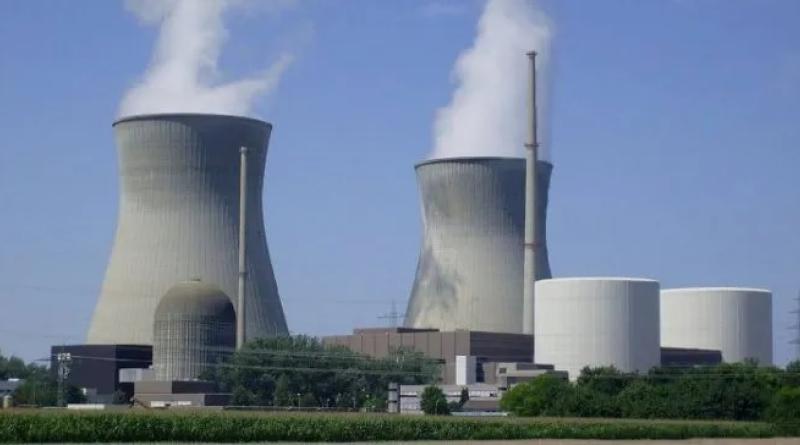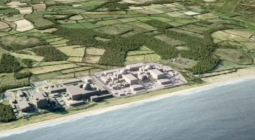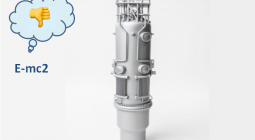Ageing Safari-1 Reactor to be replaced by new multipurpose reactor in South Africa

South African Nuclear Energy Corporation (Necsa) issued a request for information (RFI) for a new multipurpose nuclear research reactor on Sunday (MPR) that is meant to replace the organization’s present 56-year-old SAFARI-1 research reactor. The South African Cabinet authorized the proposal in September of last year.
Also Read: South Africa to Launch Three Nanosatellites
Necsa Group CE Loyiso Tyabashe said that the RFI process would help us source essential market inputs and validate parameters in the MPR financial model, allowing us to modify the project User Requirement Specification. This is consistent with the procedure that must be undertaken before nominating a preferred supplier for the building of the MPR. The MPR will carry on the heritage of generating medicinal isotopes used to treat thousands of cancer patients worldwide.
Replacing the SAFARI-1 Reactor
Despite its age, SAFARI-1 activities ensure that Necsa wholly-owned subsidiary NTP Radioisotopes is one of the top four radioisotope manufacturers in the world. NTP manufactures radioisotopes for both medicinal and industrial use. However, SAFARI-1 is currently under care and age management, and its replacement will be required for NTP to maintain its position in the worldwide radioisotope manufacturing industry. Necsa has highly trained technical professionals who have been operating the SAFARI-1 reactor since its inception in 1965; therefore, the MPR will be in good hands. Good maintenance and ageing management program is also in place to ensure that the transition from SAFARI-1 to MPR criticality is as seamless as possible, with no operational gaps or malfunctions.
The RFI was issued immediately to offer adequate lead time for the MPR project’s implementation, including procurement and construction. No contracts will be issued due to this RFI process, which is only for information gathering. Companies interested in responding to the RFI may do so in its entirety or in sections. According to Necsa board chairperson David Nicholls, the South African government’s state-owned corporation is dedicated to ensuring that the MPR contributes to the country’s economy and skill development. During its operating lifetime, the MPR will produce about 750 full-time jobs and an additional 3 800 indirect jobs for its operation and fulfilment of its research purpose. SAFARI-1 is a well-regarded institution on a global scale. It is regarded as a centre of excellence in nuclear research and technology and a resource for the whole continent of Africa.
What we reported in November 2021
Necsa’s nuclear multipurpose reactor is Projected to Cost R12 Billion
Necsa‘s nuclear multipurpose reactor (MRP) is reported to cost around R12 billion with its construction scheduled to begin in 2026. The government just authorized the reactor that will replace the present SAFARI-1 reactor. During the reactor’s development, between 5 000 and 26 000 jobs are expected to be produced.
Safari-1 is one of the world’s top four producers of medical radioisotopes, which are used to treat millions of people each year. It also supports medical, agricultural, paleontology, and bioscience scientific research, development, and innovation.
Also Read: Eskom To Acquire Concessional Finance For R400 billion for Projects
Ntombikhona Mthombeni, a spokesman for Necsa, said the market would confirm the stated cost through a Request For Information (RFI) likely to be issued in November.
According to a statement made by the government, the replacement is intended to guarantee that South Africa maintains a leader in these disciplines while also benefiting from emerging technology. Several relevant departments will lead the project, with Necsa as the primary client.
Benefits of Necsa‘s nuclear multipurpose reactor
Necsa’s new nuclear multipurpose reactor is predicted to offer considerable social, economic, and environmental advantages for the country. During the development of the MPR, a large amount of the items will be obtained locally, benefiting the local and national economies.
During its operating lifetime, the nuclear reactor will employ around 750 full-time employees and an additional 3 800 indirect workers at the NBLC for its operation and research purpose.
The MPR, according to Necsa, is aimed at providing health care advantages to the South African people in terms of diagnostic and therapeutic radiopharmaceuticals.
Other industries in South Africa, like mining and industry, power generation, agriculture, geosciences, forensics, and education, will have access to various new applications that can only be achieved with a high flux nuclear reactor.
Necsa will generate novel radioisotopes that are viewed as the future in therapeutic nuclear medicine thanks to the MPR, which opens up a larger variety of production options and prospective markets.
This involves the development of short-range radioisotopes that will be delivered to tumor cells using smart delivery devices, radiating cell by cell, and eradicating cancer while conserving healthy tissue.
What we reported in October 2021
Safari-1 Reactor to be replaced by new multipurpose reactor
The government has approved the construction of a new Multipurpose Reactor for South Africa (MPR), which will replace the Safari-1 research reactor in Pelindaba. According to Safari-1’s operator, Necsa, the cabinet clearance provides the required advance time to ensure that radioisotope production is not affected. The company has also expressed its support for a ministerial decision to increase nuclear power capacity recently authorised by the country’s energy authority.
Also Read: Solar power projects in Africa total 2GW currently
Cabinet approved a plan to replace the 20 MWt Safari-1 with a new Multipurpose Reactor for South Africa, which has been in operation since 1965 and is scheduled to retire in 2030. The reactor is operated by Necsa (South African Nuclear Energy Corporation), which also manufactures isotopes through its fully owned subsidiary NTP Radioistopes.
According to the cabinet, Safari-1 is one of the world’s top four producers of medical radioisotopes, which are used to treat millions of patients each year. It also promotes scientific research, development, and innovation in the fields of medicine, agriculture, palaeontology, and bioscience.
According to Nesca, the cabinet approval allows for the time needed to complete the procurement and construction of the MPR, allowing radioisotope production to continue uninterrupted.
Separately, Necsa recently declared that the National Energy Regulator of South Africa’s (Nersa) recent decision to accept ministerial plans for the purchase of 2500 MWe of additional nuclear generating capacity is a step in the right direction. This is especially important to ensure that nuclear energy is part of the country’s future energy mix.
Separately, the National Energy Regulator of South Africa (Nersa) recently approved ministerial plans for the acquisition of 2500 MWe of new nuclear power capacity, which is a step in the right direction, according to Necsa. This is especially important to ensure that nuclear energy is included in the country’s future energy mix.
The approval of Nersa for teh new Multipurpose Reactor for South Africa comes at a critical moment for the South African economy in the aftermath of the COVID-19 outbreak, but it also has implications for the continent as a whole.






